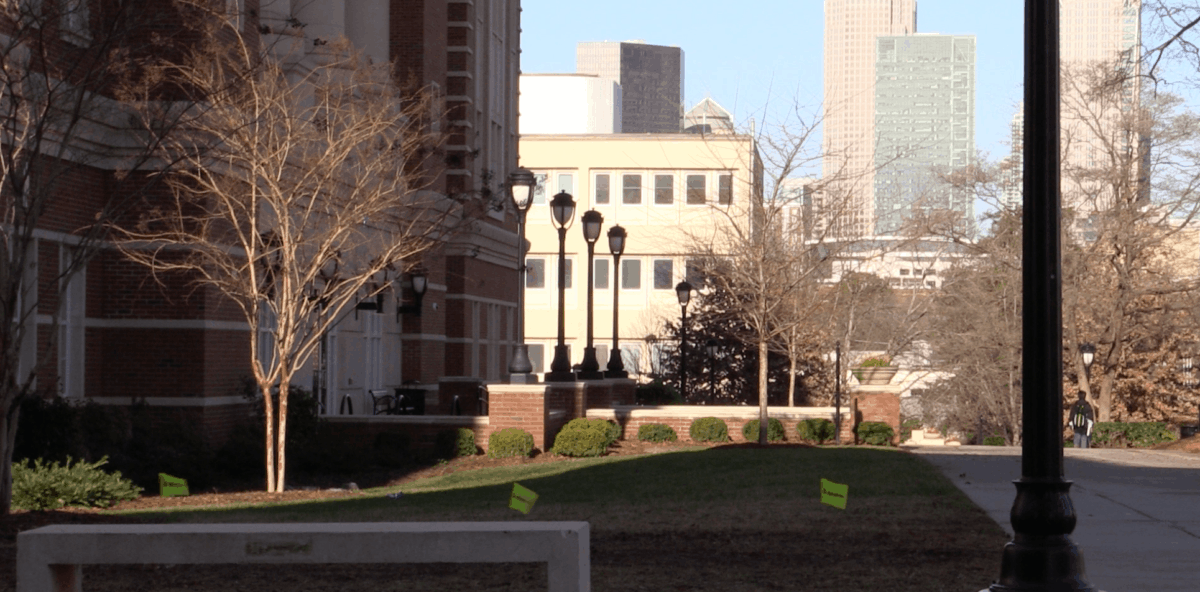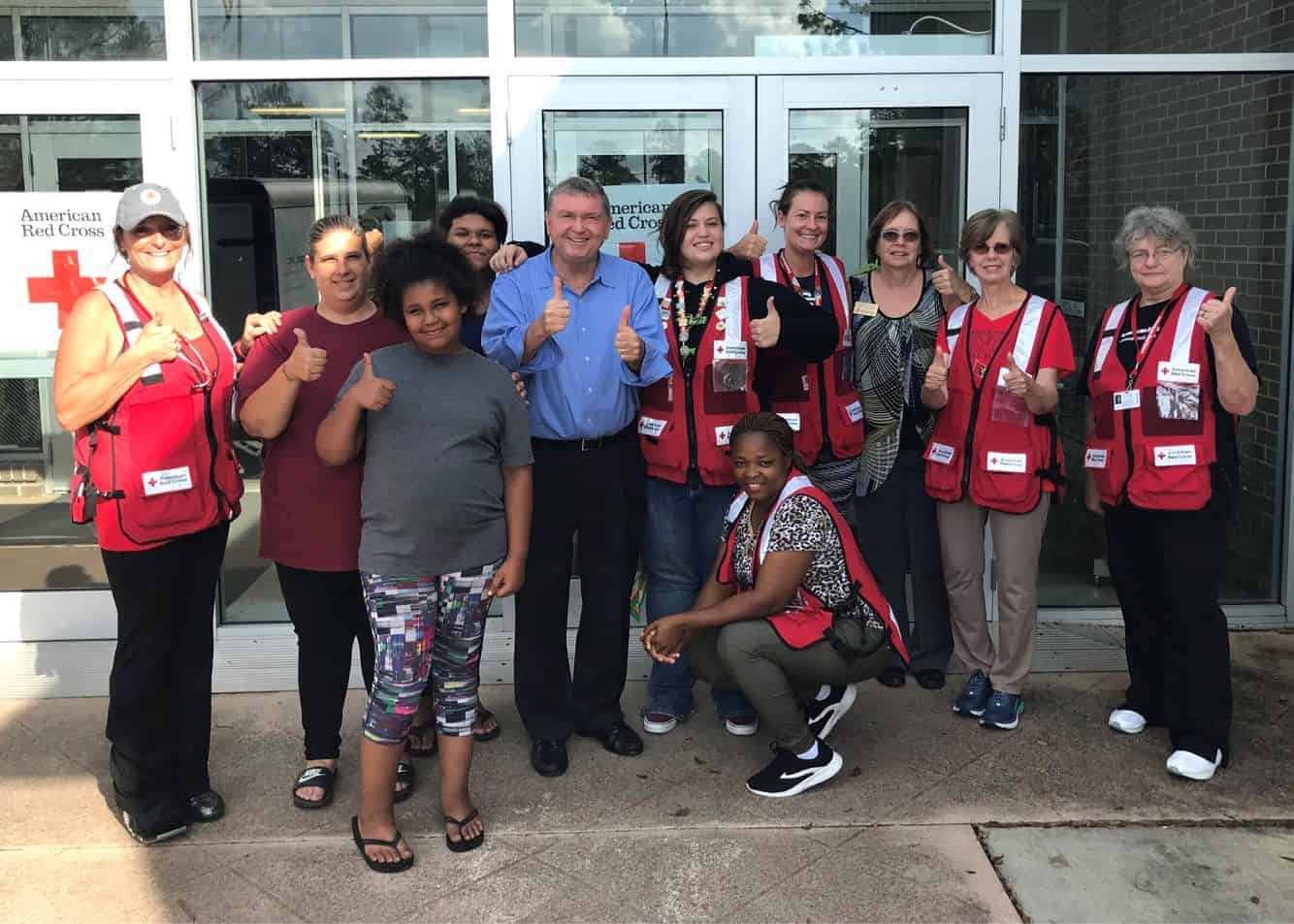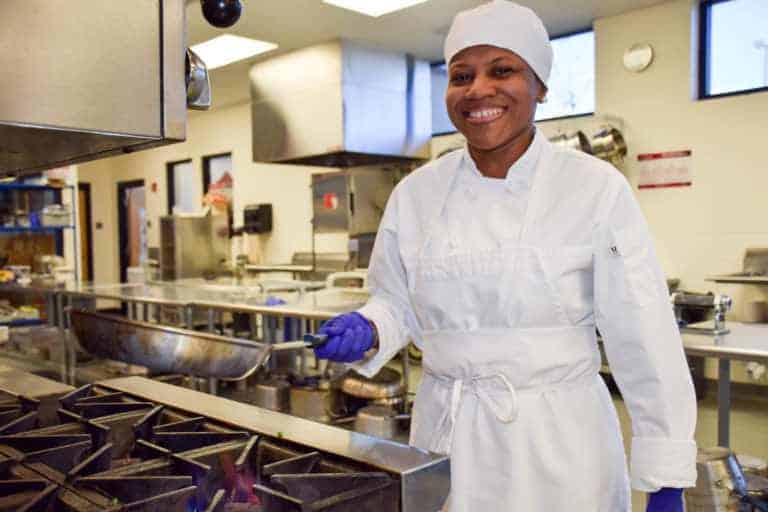The economy is good, and Pamlico County residents are enjoying higher levels of employment. As a byproduct, however, Pamlico Community College, the smallest in the state, is experiencing a drop in enrollment. When the leadership gets together for meetings, they see the swings and notice every 10th of a percent up and every percent down.
But watching the movement in numbers is not the focus according to its president, Jim Ross.
“We’re watching it closely,” he said. “It’s a concern. But we’re not just watching it. We have to do something about it.”
That “something” may differ from college-to-college, depending upon community demographics and service populations. A strong economy and low unemployment typically means less interest or desire for educational opportunities. So while responses to dropping enrollment might vary across the state, the call to action is unanimous.
“The economy always plays a role,” Central Piedmont Community College President Kandi Deitemeyer said. “It will always swing in either direction. I think you just have to have really strong thoughts about enrollment management and where you can focus your energy.”
This is the message that is coming straight from the community college system office.
“It’s a tremendous challenge, particularly in those areas where the population is declining,” said Community College System President Peter Hans, who has traveled to 46 of the state’s 58 colleges so far in his term. “I’m asking them, ‘Are you thinking ahead? What’s the plan?’”
As community colleges search for answers, there doesn’t appear to be a uniform, one-size-fits-all response, which is not surprising given the diverse populations and socioeconomic conditions across the state.

In many ways, postsecondary education is like any other business — the first step to success is to understand your customer. To know who they are, what they need, and how to reach them. The North Carolina Community College System, as well as individual community colleges in the state, are embracing new and proactive ways to accomplish this.
Among those leading this charge is NCCC’s Office of Research and Performance Management, a four-person shop responsible for all data-related reporting. Much of this reporting is legally mandated by the state legislature; however, the office is also using data to pursue goals outlined in NCCC’s Strategic Plan 2018-2022. For example, the first goal of the Strategic Plan is “to increase the percentage of North Carolinians, particularly within underserved populations, pursuing and easily accessing education or training through North Carolina community colleges.”
So the system office is now analyzing enrollment against the number of potential students in individual counties and collectively across the state. In other words, a market-share analysis.
To do this, they have to first define the potential community college student. For curriculum and continuing education (CECU) courses, that is an adult aged 18-64 with a high school diploma, or equivalent GED, but no associate degree or higher. For basic skills courses, a potential student is an adult without a high school diploma or equivalent GED.
To understand how well community colleges are reaching their market of potential students, the system office compares each college’s enrollment data to census data for their service area. So far, it has performed this analysis from 2012 through 2016.
Across the state, 15.61 percent of potential students were enrolled in CECU courses at one of the state’s 58 community colleges in 2012. By 2016, that figure had slipped to 13.25 percent. This downward trend is similar for basic skills course enrollment at community colleges. Overall, basic skills enrollment as a percentage of all potential students peaked in 2012 at 8.23 percent and fell to 6.34 percent in 2016.
Looking at statewide numbers hides the geographic variation in enrollment of potential students. Analysts use standard geographic categories when looking at the data, ranging from Large Metro Areas to rural or “noncore” counties, to understand how trends in enrollment differ across the state.
Enrollment in basic skills courses is largely the same across geographic regions, but there are large disparities when looking at enrollment in CECU courses. The rate of CECU enrollment in small metro areas and micropolitan regions, defined as an urban area with a population of at least 10,000 but less than 50,000 residents, is far higher than large, urban counties and rural, non-core counties.
Differences also exist when looking at enrollment across racial and ethnic groups. Black residents enrolled in basic skills courses at the highest rate compared to all other racial groups in each of the five years analyzed, peaking in 2013 with 11.47 percent of potential students enrolled. White residents enrolled at the lowest rate, with only 4.28 percent of potential students enrolled in basic skills courses in 2016.
For CECU courses, Native Americans enrolled at the highest rate across all years, with the highest enrollment rate in 2012 with 22.93 percent of potential CECU students enrolled. The share of potential students enrolled has declined for all racial groups from 2012 to 2016 except for Latino students. In 2012, 10 percent of potential Latino students were enrolled in CECU courses; by 2016, that figure had increased to 12.44 percent.
These data highlight the fact that enrollment challenges are not specifically a rural versus urban challenge. Community college leaders are taking different approaches to the enrollment challenge based on their location and service population.

In urban areas, the response to enrollment decreases has, at least in part, led to a focus on short-term programs and retention of enrolled students.
“We certainly have a little bit of loss in head count [number of students],” said Deitemeyer, whose college boasts six campuses around the metropolitan Charlotte area. “Given the economic environment that we’re in, especially in Charlotte, I’m not surprised. There are jobs aplenty and opportunities for people to go to work and that typically happens. But we’re certainly up in areas such as continuing educations or things that have more of a short-term workforce initiative.”
The short-term programs leading to a certification or credential have a staying appeal because prospective students may be employed but may be interested in advancing within their careers by taking an eight or 12-week course rather than leaving work and spending two to four years getting a degree. For more on the different types of courses offered by community colleges, read our EdExplainer here.
“We’re having lots of conversations about economic mobility,” Deitemeyer said. “Trying to get students to come into those programs, stay and complete. As well as try to get them to think about shorter term workforce training opportunities where they can earn a certification, then enter the workforce. Perhaps advantage themselves in a career and then perhaps that company would then send them back to Central Piedmont for that next step in the credential or that next level of momentum up that career ladder.”
While this is successful at bringing students into the school and providing colleges an opportunity to show first-hand what other programs are available, it does not have the same impact on funding as bringing in a new curriculum student.
“Right now we’ve got a pretty robust economy with a very low unemployment rate, and so therefore you’re going to have a lot more part-time students, which is going to adversely impact our FTE generation,” said Thomas Gould, vice president of academic affairs at Pitt Community College. “We have to be flexible, we have to be innovative, we have to be creative.”
One of those ways is to focus on retention, because successful completion of short-term programs not only advances the community college mission, but it also generates organic growth — boosting bottom-line numbers through stopping previous losses to enrollment.
“Where we are is we say retention is the new enrollment,” Gould said. “Our philosophy is access is great, but without completion it’s kind of a false promise we’re making. So what can we do to enhance retention?”
That answer runs the gamut across the colleges, but after looking at data and state and national research, providing more advisor and student support is among the leading initiatives. At Pitt, for instance, every new student gets a student success navigator with whom they check in about myriad issues — from academic problems to transportation problems to anything that impacts their ability to attend classes.
“Also, this individual works with the student to make sure that by the time first semester is over, that student has a clear career plan, academic plan, and financial plan,” Gould said. “[They know] where they are going, how they’re going to get there, and how they’re going to pay for it.”
Advising is especially important to so-called special populations, who perhaps have not been groups targeted by institutions of higher learning — such as veterans, Hispanics, African-Americans, and first-generation college students. These groups are among the fastest growing populations in the state, so getting them in the door and keeping them enrolled through completion is especially important as community colleges and industry think about the future workforce.
Through various initiatives, such as minority-male mentoring programs and single-stop programs that offer assistance around food and housing insecurity, colleges are hoping to make inroads with groups in their communities that have been previously underserved.
“For some underserved populations, you’ve got to think about less traditional methods of reaching them and letting them know — here are the opportunities available for you and it’s easy to access and it’s affordable and we’ll help you figure it all out, etcetera,” Hans said. “It’s critical because with the changing demographics of the state, we’re not going to serve the state effectively if our numbers don’t match the state’s population. And, happily, community colleges largely do, but it’s difficult to obtain the American Dream without those educational opportunities being available.”

While urban and rural community colleges, alike, talk about community engagement, the topic is very personal at the smaller schools.
For instance, without the resources to divert to advisors and mentors, Pamlico Community College takes a team approach to ensuring students stay enrolled. These range from personal calls to students no longer signing up for classes to individually reaching out to students on the “purge” list, a ledger of students who are signed up but have not paid for the upcoming semester and are in danger of being unenrolled.
Ross says there were 42 students on the college’s most recent purge list. He and his team reached out to every one of these individuals, and through problem-solving and payment plans, only four were purged.
“Thirty-eight human beings took classes who would not have,” Ross said. “And they did because we proceeded with going above and beyond the norm and lending a helping hand to say, ‘We care about you, let us help you, let’s do this together.’ It just shows you the team effort and caring about people as people, versus just as numbers.”
Ross carries that human approach forward to community engagement, talking to residents and understanding who can benefit from his college’s services. Just last year, he says, he recruited three waitresses in restaurants where he ate to look into opportunities at the college. They are each enrolled full time now.
“We have to go out to people, we can’t just wait for them to come walking in the door or call us or email,” Ross said. “I ask everyone [here], everytime you’re out, whether you’re at a restaurant, a Walmart, a gas station — develop relationships and ask people what they’re doing and what they would like to do. … By looking at this as a way to help human beings versus this is a way to get numbers up, it’s a tremendous difference in how we look at things.”
Ross has been involved in enrollment campaigns in Florida, North Carolina, and Virginia. Based on his experience, personally engaging the community — particularly in small communities — is essential to enrollment strategy.
Upon his arrival at PCC, the first thing he did was reach out to the community and let them know the services and education available at the college. This outreach is personal — meaning in-person visits with each media outlet, in-person meetings with non-profits, and forming 70 new partnerships with organizations in the community.
“By embracing the community, the community knows more about what we’re doing,” Ross said.

Community engagement allows colleges to market their services and convey program benefits directly to those who may need it. And it’s a vital strategy for rural colleges, which also tend to be smaller in student population and, thus, see a greater impact from enrollment drops. With funding tied to enrollment, their budgets are already smaller and resources spread thin.
“I’ve led at an institution that’s smaller that doesn’t have the same level of resources, and a dip in the enrollment of maybe one or two percent can have a very significant impact,” said Deitemeyer, who was previously among leadership at Polk Community College, Davidson Community College, and College of The Albemarle prior to her arrival at CPCC.
“Even middle-sized colleges. Especially when much of our resources are invested in talent and the individuals who are delivering instruction, who are delivering those student support services, who are working in the library. And when enrollment ebbs and flows in one direction or another significantly, if you don’t have some flexibility in your resources, then that’s going to impact people. Nobody wants to be in that situation.”
With rural schools, leaders say they have to focus on finding new enrollees moreso than redistribution of resources.
One strategy to do this is to communicate the attractiveness of today’s skilled labor jobs. Despite a growing economy and higher employment rates, many high-skilled trade jobs remain unfilled.
“We talk about a skills gap,” said Thomas Gould, vice president of academic affairs at Pitt Community College. “It’s not just a skills gap; it’s an interest gap. It’s really making sure that, even middle school and high school students, and particularly their parents, understand the opportunities that are available to them in technical areas.”
Gould continued, explaining “Historically, there’s always been the push for the four-year degree, but really the jobs that are available now and are coming up are in technical areas. You can make an extremely good living in technical areas.”
One of the challenges has been combatting an old notion of what trade jobs look like in fields such as welding, mechatronics, machining, electrical, and biotechnology.
“Particularly in rural areas, you do have a population that are looking for good jobs where there is a history of textiles and manufacturing,” Gould said. “But what we’re trying to do is educate the community that this is not your grandfather’s manufacturing. This is very clean, very professional. You can make a great living wage and support a family. So what we’ve been really working on is educating the community and educating their parents.”
With the advances in these skilled jobs, however, comes the need for new knowledge on more technologically advanced equipment and newer processes. From an enrollment standpoint, bringing residents in who have worked in these fields previously but lack the skills to work in the industry today presents an opportunity.
“Some of this ties back in a very global way to a political alienation we see on right and left,” Hans said. “And part of this has to do with the still lingering aftermath of the Great Recession that — whereas I didn’t used to need a high school degree to work someplace, now actually the equipment is so computerized and you need that background. People feel a certain alienation, like ‘Why aren’t those opportunities available to me and my family,’ and, ‘What happened to us?’ And, really, part of that response is community colleges because they’re the ones on the ground closest to the people.”
And it presents an opportunity to attract students who are already employed – but are either “under-employed” or not working in the careers they ultimately desire. For this group, a short-term program can become a stepping stone to higher wages and greater job satisfaction.
“Community colleges can fill that gap,” Ross said, “by allowing people who are currently in the under-employed category, where they’re making $8, $9, $10 an hour and by getting a community college education. Whether they get an associate degree or a certificate, they are able to upgrade their skills and walk away doubling their income.”

While issues and initiatives exist across the 58 community colleges, there are shared solutions that college presidents and system leaders advocate. Chief among them: Offering relevant programs and regional collaboration (as opposed to consolidation).
Hans believes that whatever other strategies colleges employ to address enrollment challenges, regional collaboration must be part of the response.
“And I very carefully explain the difference between regional collaboration, which I view as a positive, and potential consolidation, which I oppose because we want to determine our own destiny for the benefit of the communities we serve,” Hans said.
Hans said that consolidation, which would see some community colleges close in order to boost enrollment and resources at other nearby institutions, would be a mistake, pointing out that “in these areas, the community college is a source of pride, identity, and hope.”
However, colleges can collaborate with each other, sharing back-end and other resources without either losing their identity or closing altogether.
“As part of that solution, you’ve got to think, okay, instead of viewing the next community college over as somehow a threat, you’ve got to think, ‘Well, are there areas where we could share some services, where we could hire faculty members together?’” Hans said. “What can we do where two plus two equals five?”
In addition to collaboration, Hans echoed many of the individual community college presidents, calling for intentional development of programs and service offerings.
“We’ve also got to be able to show that we’re thinking ahead to the demographic realities of North Carolina in 2019, where some areas are growing and prospering and where some areas are struggling,” Hans said. “If you’re located in a struggling area, you’ve got to be able to serve your community as effectively as possible. So, therefore, people in the area have to know the services and the offerings that you provide, and how it’s relevant to them.”
Relevance is key to the equation. Each community, home to different industries and businesses, has unique needs.
“That’s why our relationships with our business and industry partners [are] so important because they do recognize the need that is there for them to assist us with instruction, equipment, and keep us informed as to whatever changes are occurring within their particular field so that we are training and educating a workforce for their need, not what we perceive their need to be,” Gould said.
In Pamlico County, Ross has worked with local businesses and industries on understanding their needs, but also for assistance by way of provisions for equipment and student support. For him, it’s full circle — the personal approach to the community starts with a desire to help individuals find a better situation, but it ends with those individuals being employed by businesses in the community and helping to drive local commerce forward, too.
“That’s why, in my opinion, the community colleges are so essential to the state,” Ross said. “We are the ones that are that bridge for the people in our community to get the skilled jobs that will take them forward in life, and also fill those gaps [in skilled workforce] that the local companies are looking for.”
It’s a pivotal role community colleges are playing for the state, and with funding challenges driven by enrollment drops, successfully playing that role requires more and more creativity.
“We have to get creative, you have to get innovative,” Hans said.



